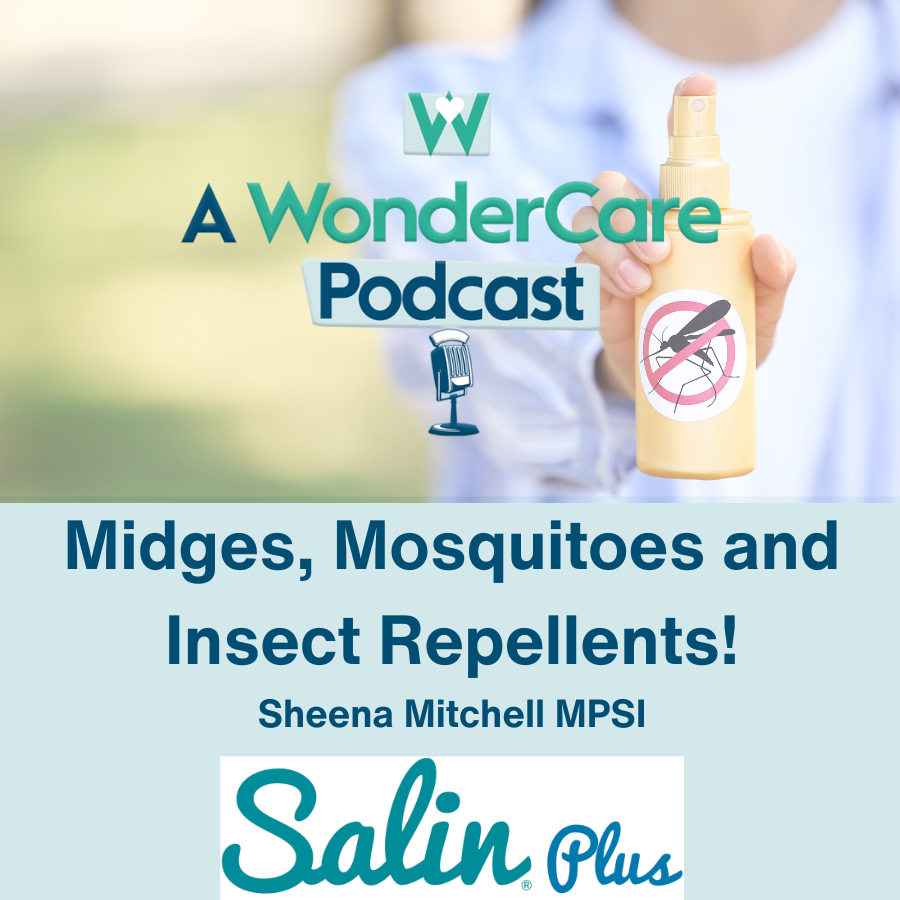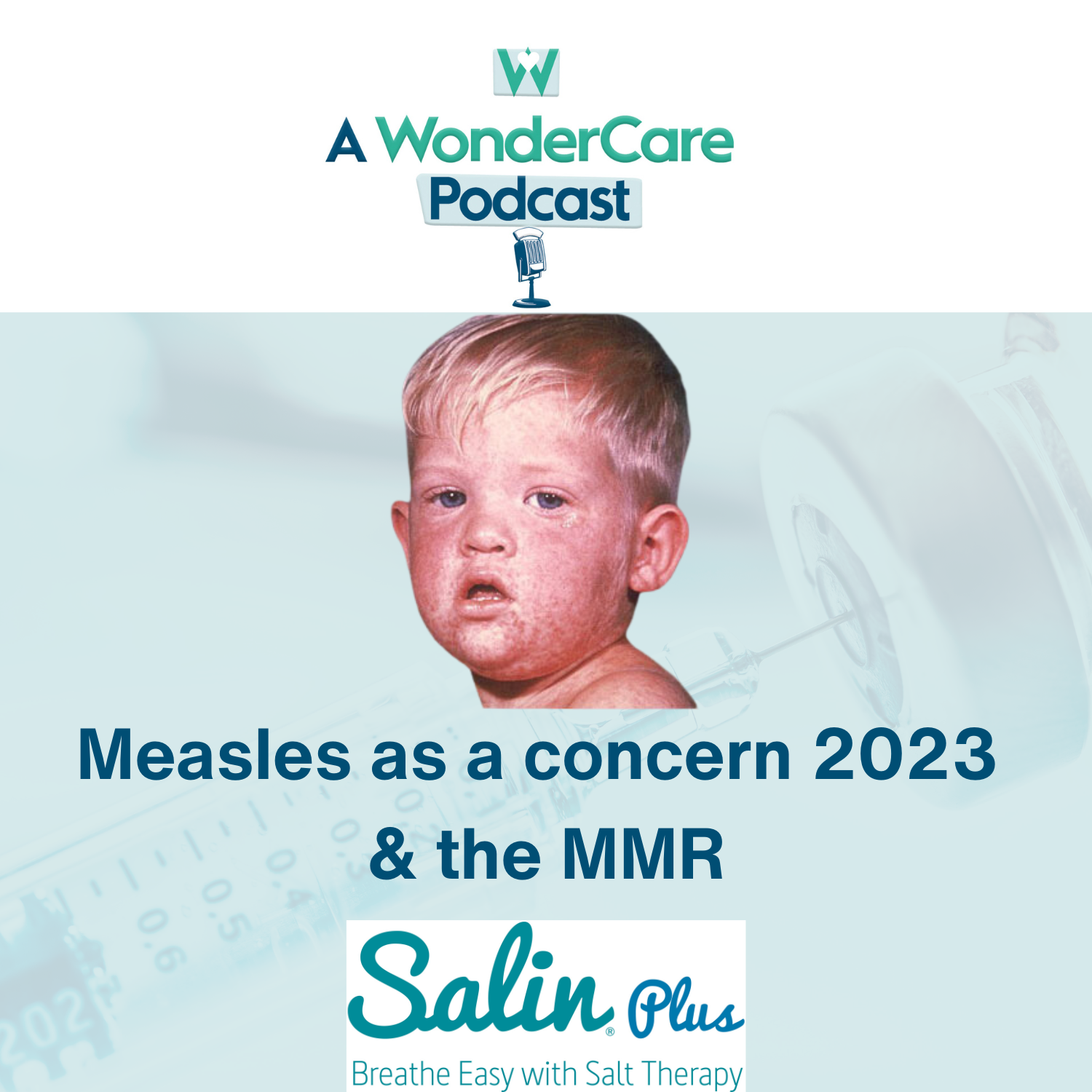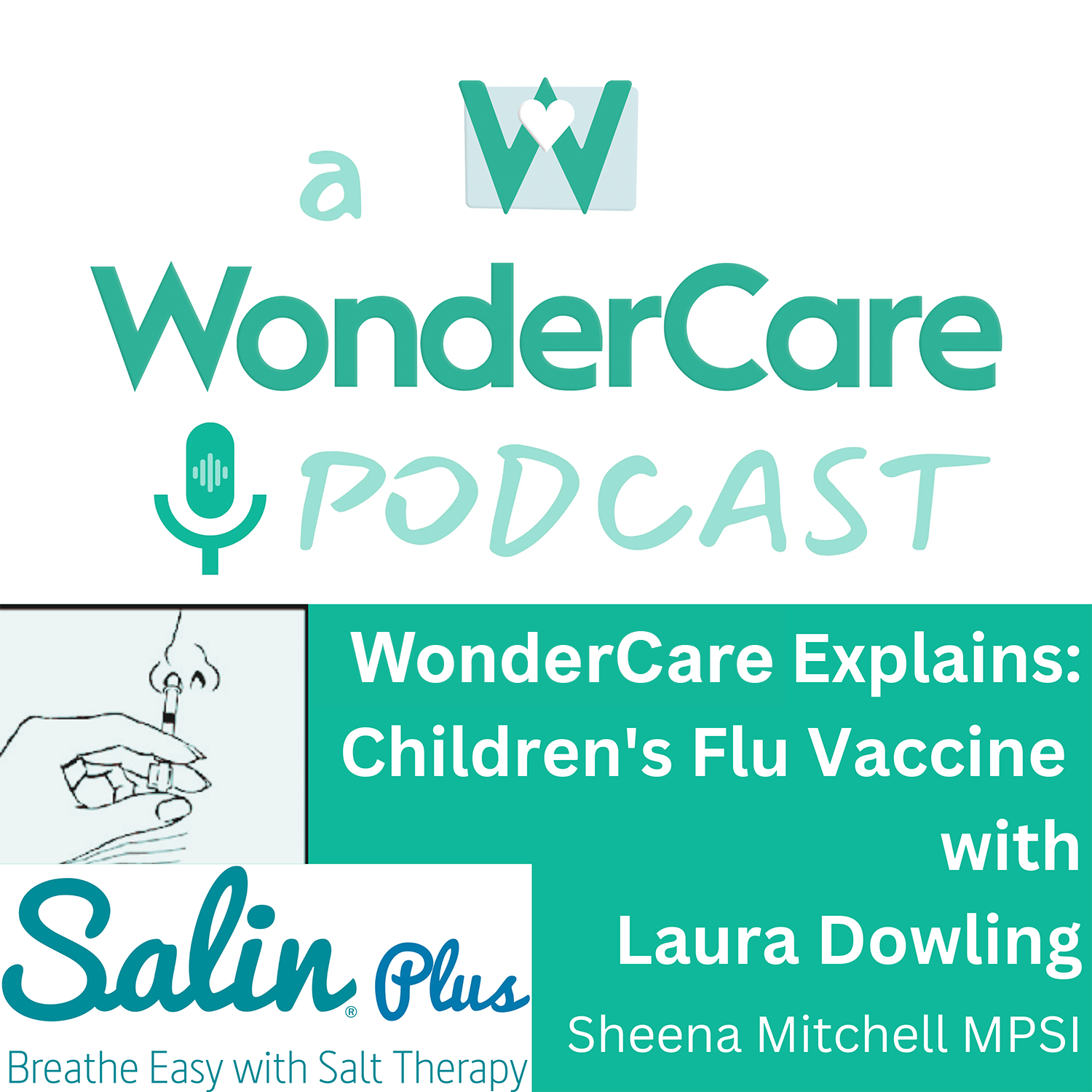Episode Transcript
[00:00:03] Speaker A: Hello and welcome to a Wonder Care podcast. My name is Sheena Mitchell and I am a pharmacist, mum of three and here to guide you through all of your family health care needs.
This week, I want to talk all about low body temperature. As parents, we all become very alert when our children have a high temperature, but is watching out for a low temperature just as important?
I'm just going to pause for a.
[00:00:31] Speaker B: Second to give a big shout out to my supporters. Salon Plus. Salon plus is the world's 1st 100% natural dry salt therapy device. It's clinically proven to relieve a wide range of allergens and respiratory conditions. The salt therapy method has been trusted for generations and is now hugely popular worldwide. More and more people are recognizing the superb results achieved from a natural and noninvasive method. This device helps you to breathe easier and sleep better.
[00:01:01] Speaker A: We know that normal body temperature for a child is anywhere between 36 degrees Celsius and about 36.8 degrees Celsius. Anything over 38 degrees can be classified as a fever. But did you know that low body temperature, that's a temperature under 36 degrees, can actually be just as serious as a high one? Low temperature, particularly in young babies and the elderly, can be a sign of serious infection, such as sepsis. Obviously there are different types of causes of low temperature, but I'll explain the symptoms first and then we can consider what might cause them.
A baby with a low temperature may look and feel healthy, but their skin will feel cold and they may be pale. They may also be limp, quieter than normal, or disinterested in feeding. Sometimes they can even appear confused or disorientated. Your child might start off by shivering initially, but actually as the body temperature drops to more dangerous levels, that might actually reduce or even stop and they can lose consciousness. It's also important to watch out for any change in breathing. So if a baby's body temperature gets very cold, their breathing can actually become slow and shallow. These are the symptoms of hypothermia, and it's really important to be aware of them because it does need to be treated as a medical emergency.
What can cause it and how do we prevent it? Well, there are two types of hypothermia. Hypothermia can be acute. This is when the temperature drops too much too quickly. This could happen, say, for example, if you are exposed to really cold weather or you're in a cold bath, swimming pool, or even the sea. Hypothermia can also be chronic. So this is when someone becomes cold slowly. It can happen with certain diseases, or if you're exposed to cold temperatures for a prolonged period of time, 90% of heat loss actually occurs through your skin. The remaining 10% is exhaled through your lungs. In cold water, you can actually lose heat 25 times faster than in air. Wind is another thing that can actually speed up heat loss. So how do we prevent it? First of all, we need to ensure that the environment where your child is sleeping or is present during the day is kept warm, ideally around 18 degrees Celsius. But for sleep time, anywhere between 16 to 20 degrees Celsius is recommended to decrease the likelihood of sudden infant death syndrome. Did you know that multiple layers of clothing actually trap warm air more than one large, thick layer? It's also important to ensure that baby's clothes are always dry, and remove any clothes dampened by the weather as soon as you can by replacing them in warm, dry layers. If you fear your baby may become cold, you can feed them with warm fluids such as breast milk or warm formula. You can add additional layers to warm them up gently. You just don't want to heat them up too fast, so you can add things like a hat, coat, or blanket. It's important that their heads and torsos are kept warm primarily. Try and move to a warm environment. Avoid warming them up too quickly by putting them into a warm bath because this can actually cause their blood vessels to expand too quickly and it can cause a drop in blood pressure, which is dangerous. As I said there, focus on their torso and head first. Don't over concern yourself with warming up their limbs as priority, because once their head and torso are warm, this will ensure that their organs are protected. If your baby's temperature drops below 35 degrees Celsius, do seek urgent medical attention. If you suspect that your baby is cold, take their temperature. And if you notice any decline in energy, slower breathing, excessive fatigue, confusion, lack of feeding or limpness, also seek medical attention. Remember, while most patients will experience a high temperature at the onset of sepsis, a low temperature is just as much of an indicator. For some people, sepsis is a life threatening complication of infection, and of course, most cases lead to a full recovery if it's identified and treated early. But without quick treatment, it can lead to multiple organ failure and death. If you feel that your child is cold and you've found that their temperature is low and you don't think it's anything environmental, like you haven't just been swimming in the sea with them, or you haven't been outside in a cold place, or the house isn't particularly cold, then you do need to look out for the signs and symptoms of sepsis. They're not always easy to spot. Sometimes they can be a little bit vague. Your child might have symptoms of other conditions, like a flu or chest infection. They might even just have a wound on their body that's not healing properly. So the early signs of sepsis in babies and children under five include vomiting, that low temperature that we talked about, difficulty breathing, sunken eyes, blood in their vomit, a bulging soft spot on their head, a stiff neck, and just behaving differently. And it's causing you to feel concerned. Obviously, older adults will complain of things like headache or just feeling unwell or even chills or shivering. But for young children, they're not able to tell us those symptoms. So we do need to stay vigilant. So when you're checking your child's temperature, if they're under five years of age, it's recommended to take their temperature using an infrared tympanic thermometer, which, in other words, is an ear thermometer. Or you can use an underarm thermometer. Other methods of measuring temperature are not routinely recommended. I personally am a big fan of the Braun thermoscan ear thermometers and find them really reliable, particularly the model five and seven. The one thing I would say about using an ear thermometer is that you really need to make sure that they're put into the ear correctly. So this is really, really important. If your baby's very young and you're not confident that you're getting accurate readings from an ear thermometer, I would always use a digital thermometer under the arm. When you're using a digital thermometer under the arm, you have to hold it gently but firmly with their arm against their body to keep thermometer in place for however long it says on the instructions. It usually takes around 15 seconds, and generally they'll beep when the reading is ready. I don't recommend using strip type thermometers because they're not an accurate way of measuring your child's temperature. For adults, it's the same thing. You can use a digital or ear thermometer. So really, the advice is the same. For adults, you can use a digital thermometer, or for children over five, and instead of putting it under your arm, you can place the tip under your tongue towards the back of your mouth, and close your lips around the thermometer, and then wait until it beeps or flashes. You can use an ear thermometer. And again, I find these much easier than the digital thermometers. The likelihood of you getting a six, seven or eight year old to actually stay with the digital thermometer under their tongue for long enough and keeping their mouth closed, it can be hit and miss. Whereas with the ear thermometer, unless you have a very small baby whose ears are too small to fit the probe of an ear thermometer in reliably, then they are actually really accurate. What I would say is you can gently pull your ear up and back before putting the thermometer in your ear, and it does help to get a more accurate reading. If you don't have a thermometer and you're concerned, you can still check temperature by putting your hand on the chest or back. So if the chest or back feel hotter than usual, then there may be a high temperature. Everyone always tends to go to touch the forehead when they're checking temperature, but that's really not reliable. Does need to be kind of the chest or back. I just think it's really important to flag low body temperature as a symptom. We always associate infection with high fever, but that's simply just not the case for everyone. And even in terms of babies, particularly young ones, we do need to be really conscious about the environment that they're in, particularly when the weather is so changeable. So I definitely advise having lots of layers with you wherever you go. And it's something to bear in mind when you're putting your baby to sleep at night. Multiple thin layers will trap more heat than one thick layer. Just to bear that in mind when you're planning your baby's sleep time, I hope you found this episode helpful. If you do, it would be great if you could rate or subscribe and I will be back to talk to you again soon about another family health talk. Thank you very much for listening.


